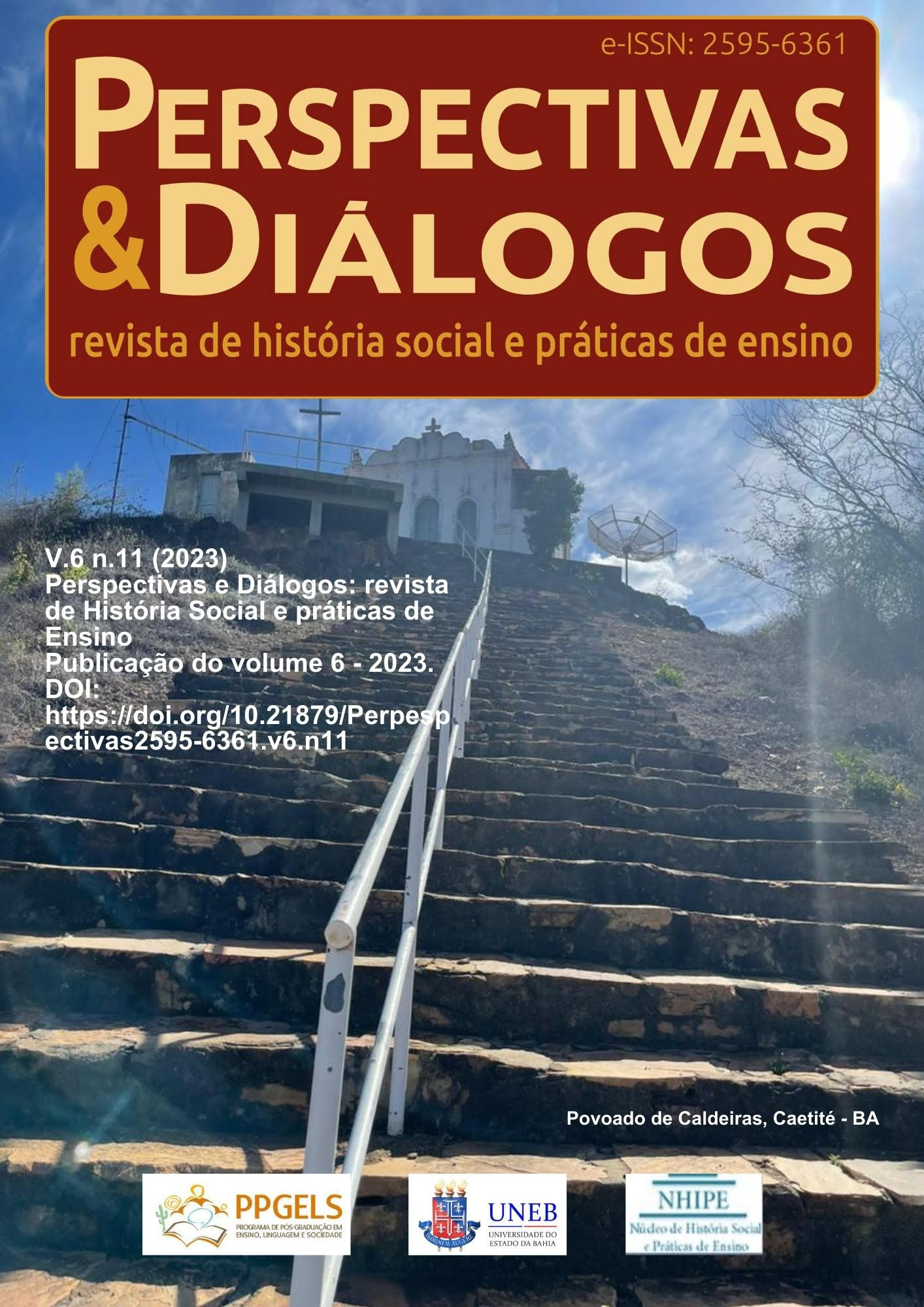The verb to arrive in position v1: radiality and constructionalization at classroom
Keywords:
teaching, verbo to arrive, periphrasis, constructionalization, polysemyAbstract
In this article, we analyze the constructionalization process (Traugott; Trousdale, 2013) through which the verb to arrive in Brazilian Portuguese, but specifically in structures of the type [V1 (x) + V2], in which the verb to arrive occupies the V1 position. For that, we present reflections on the language in use, relating it to the general domain cognitive factors according to Bybee (2010) and the radial organization proposed by Lakoff (1987). Furthermore, anchored in the official documents of Brazilian education for teaching the Portuguese language (Guidelines Law and Bases of National Education (Law no. 9,394/96); National Common Base Curricular (NCBC), we raise the discussion about the relationship between the official documents and the teaching of grammar based on the polysemy of the verbal category and, by analogy, recognizing the various meanings of verbs in complex structures of the Portuguese language. The sample chosen for this analysis is composed of 48 (forty-eight) interviews from two oral corpora, namely: the Corpus of Popular Portuguese of Vitória da Conquista (Corpus PPVC) and the Corpus of Cult Portuguese of Vitória da Conquista (Corpus PCVC).
Downloads
References
BRASIL. Ministério da Educação. Base nacional comum curricular: educação é a base. Brasília: DF, 2018.
BRASIL. Lei n.º 9.394, de 20 de dezembro de 1996. Estabelece as diretrizes e bases da educação nacional. Legislação. Brasília: Casa Civil da Presidência da República, 1996.
BORBA, Francisco da Silva. Uma gramática de valências para o Português. São Paulo: Ática, 1996.
BUENO, F. da Silveira, Grande Dicionário etimológico-prosódico da Língua Portuguesa. 2º volume, Saraiva: São Paulo, 1968.
BOLÉO, Manuel de Paiva. Brasileirismos (Problemas de Método). Coimbra Editora, 1943.
BYBEE, J. L. Língua, uso e cognição. Tradução de Maria Angélica Furtado da Cunha; revisão técnica de Sebastião Carlos Leite Gonçalves. São Paulo: Cortez, 2016. . Language, usage and cognition. Cambridge: Cambridge University Press, 2010.
CUNHA LACERDA, P. F. A ; DALL'ORTO, L.F.M.. Uso do software Antconc na análise de dados do uso (no prelo).
LAKOFF, G. Women, fire, and dangerous things: What categories reveal about the mind. Chicago: University of Chicago Press, 1987.
MARTELOTTA, M. E. Mudança linguística: uma abordagem centrada no uso. São Paulo: Cortez, 2011.
ROCHA, Nayara Crisley Barreto Brasil Farias. Um estudo sociofuncionalista do verbo chegar na língua portuguesa: abstratização dentro e fora de estruturas perifrásticas. 2017. 138f. Dissertação (Mestrado em Linguística) Universidade Estadual do Sudoeste da Bahia, Vitória da Conquista, 2017.
TOMASELLO, M. (ed.) The new psychology of language, v. 2. New Jersey: Lawrence Erlbaum, 2003.
TRAUGOTT, E.; TROUSDALE, G. Constructionalization and Constructional Changes. Oxford: Oxford University Press, 2013.
VITERBO, Joaquim de Santa Rosa de, O.F.M 1744-1822, Elucidário das Palavras, termos e frases, 2 ed. Lisboa.
Downloads
Published
How to Cite
Issue
Section
License

This work is licensed under a Creative Commons Attribution-NonCommercial-NoDerivatives 4.0 International License.


